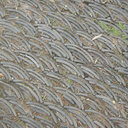Microcrystalline preparation of akebia saponin D for its bioavailability enhancement in rats.
Ключови думи
Резюме
Akebia Saponin D (ASD) or asperosaponin VI is the most abundant constituent of the rhizome of Dipsacus asper, which has been used for the treatment of lower back pain, traumatic hematoma and bone fractures. In recent years, it was reported that ASD was a potential treatment strategy for Alzheimer's disease (AD). However, the low bioavailability of ASD limited its clinical utility. Microcrystalline preparation is one of the effective methods to improve drug absorption. The drugs prepared by different methods can present different solid forms (polymorphs), and different polymorphs have significantly different bioavailabilities. The objective of this study was to prepare ASD polymorphs using the different preparation processes and to evaluate their physicochemical properties and oral absorption. ASD-2 obtained by the antisolvent process was simpler and had higher recovery (78.5%) than that of ASD-1 by a two-step macroporous resin column separation (56.5%). The ASD polymorphs were characterized using differential scanning calorimetry (DSC), thermogravimetry analysis (TGA), powder X-ray diffraction (PXRD) and scanning electron microscopy (SEM). The results revealed that ASD-2 existed in microcrystalline form, while ASD-1 was amorphous. Furthermore, the equilibrium solubility, dissolution in aqueous solution and pharmacokinetic parameters of the samples were determined. ASD-2 showed lower aqueous solubility than that of ASD-1 (p < 0.01). In addition, ASD-2 showed lower dissolution with only 65% of the drug released while ASD-1 had a higher dissolution with 99% of drug released at the end of the 180 min testing period. Although ASD-1 significantly increased solubility and dissolution, the AUC 0-20h of ASD-2 was 4.3 times that of the amorphous ASD-1 in vivo. Data suggest that the microcrystalline preparation of ASD-2 is not only reasonable in economy and suitable for large-scale preparation, but also a promising method to enhance bioavailability of ASD.


